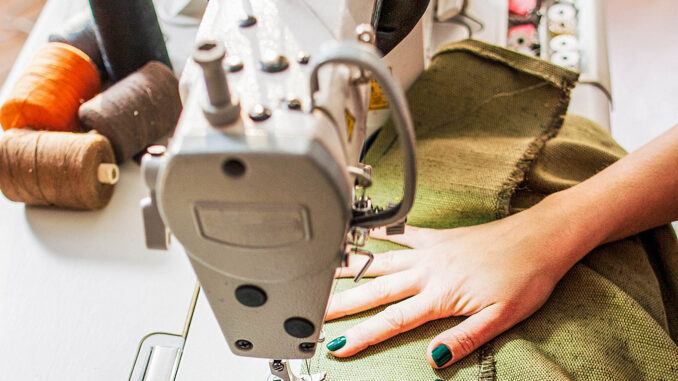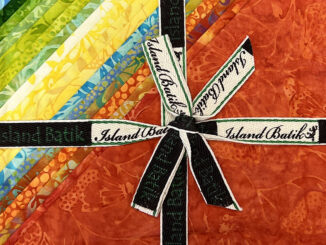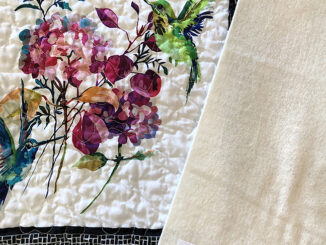
As with any sport or hobby, the crafting world has its own set of vocabulary to understand. Sewing has quite a few terms that need more explanation. The more common terms used in sewing and their meaning are:
Back Stitch: Stitching backwards over the loose threads at the beginning and end of a seam to secure the threads so they don’t come apart.
Baste: Machine or hand-stitching with a long stitch length to temporarily hold two pieces of fabric together before permanently stitching. Beginning and end of the seam is not secured so stitching can be easily removed.
Bias: Refers to the stretch when cutting through woven fabrics at a 45-degree angle. Quilting will involve some cuts on the bias.
Blind Hem: Hem that is almost invisible on the outside of a garment. Technique can be done by hand or on the sewing machine with a Blind Hem foot.
Clean Finish: Finishing the raw edges of a seam to prevent raveling. There are several techniques to use.
Clipping Corners: Snipping triangular piece of seam allowance off the corner of a seam to prevent bulk in the corner when turned right side out.
Clipping Curves: Removing small triangular pieces of fabric to allow a seam to lay flat along a curve when turned right side out. Small slits can also be made along a curve so it is allowed to spread apart when turned right side out to keep everything flat.
Easing: Distributing “extra” fabric to fit two pieces together. Commonly used for sleeves, this can be used in many stitching areas to accommodate extra fullness without adding pleats or tucks.
Edge Stitch: Stitching on the outside of a project near a fold or edge to keep them in place. Also known as Top Stitching if done slightly away from an edge.
Facing: Fabric used to finish the raw edges of a garment such as the necklines, armholes, and waistbands. This is used to make the finished edge look nice and lay flat.
Gather: Created by running a thread or long stitch along the length of the fabric and pulling on the threads to shorten or gather the fabric to create fullness.
Grain: Refers to the way the threads are woven into the fabric. Warp grain is the lengthwise threads of the fabric and the grain with the least stretch; weft grain are the threads that run selvage to selvage.
Hand: Refers to the feel and drape of a fabric (The fabric has a nice “hand”).
Hem: Finishing the bottom of a garment to hide raw edges.
Interfacing: Materials that are used on the wrong side (either fused or sewn in) of a fabric to give it more stability or loft or whatever the desired effect may be. There are several types of interfacings and are used according to area that needs the stability and the type of outer fabric. Typically interfaced garment areas include: collars, buttonhole areas, waistbands, and shirt cuffs.
Seam Allowance: The small space of fabric between the raw edge and where the seam is sewn. Common seam allowances range from ¼ inch to 5/8 inch. Woven fabric can fray, so the seam needs to be sewn away from the raw edge for security.
Selvage: The woven edge of the fabric that doesn’t ravel.
Stay Stitch: Pre-sewing along the edge of a curve to help prevent the fabric from stretching along the “bias” when assembling a garment. Often used on the curves of sleeves and necklines for stability during garment construction.
WOF: Width of fabric; common abbreviation in quilting instructions. In quilting, many cuts are made selvage to selvage.
There are many other terms associated with sewing but the above will go a long way in helping you understand sewing patterns and projects. Happy Stitching!
-submitted by The Sewing & Vacuum Center




